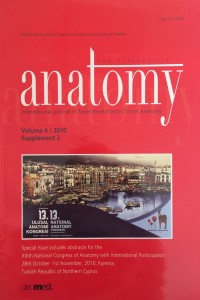Abstracts for the XIIIth National Congress of Anatomy with International Participation, 28th October - 1st November 2010, Kyrenia, Turkish Republic of Northern Cyprus
Abstract
Interventional radiological procedures are defined to cure a lesion or prevent the development of a lesion or acquire the pathological diagnosis under the guidance of imaging modalities. Interventional procedures can roughly be divided into two parts as vascular and non-vascular interventional radiology. Non-vascular procedures are carried out for the lesions located in abdominal cavity, thoracic cavity, respiratory system, biliary system, urinary tract, gastrointestinal system or musculoskeletal system. These procedures protect the patient from the risks of surgery and general anesthesia. Success rates of the interventional procedures are the same with the results of surgical operations. Complication rates due to interventional procedures are generally lower than the surgical rates. The patients do have shorter hospital stay because of the lower complication rates as large surgical incisions and general anesthesia are not applied during the procedures. Interventional radiological procedures, unlike other treatment methods, can be repeated if the one applied is not sufficient to treat the lesion. Most procedures of the interventional radiology have already become the first alternative among the treatment options in the treatment of most of the patients.
Keywords
References
- -
Details
| Primary Language | English |
|---|---|
| Subjects | Health Care Administration |
| Journal Section | Abstracts |
| Authors | |
| Publication Date | November 5, 2010 |
| Published in Issue | Year 2010 Volume: 4 Issue: S2 |
Cite
Anatomy is the official journal of Turkish Society of Anatomy and Clinical Anatomy (TSACA).


